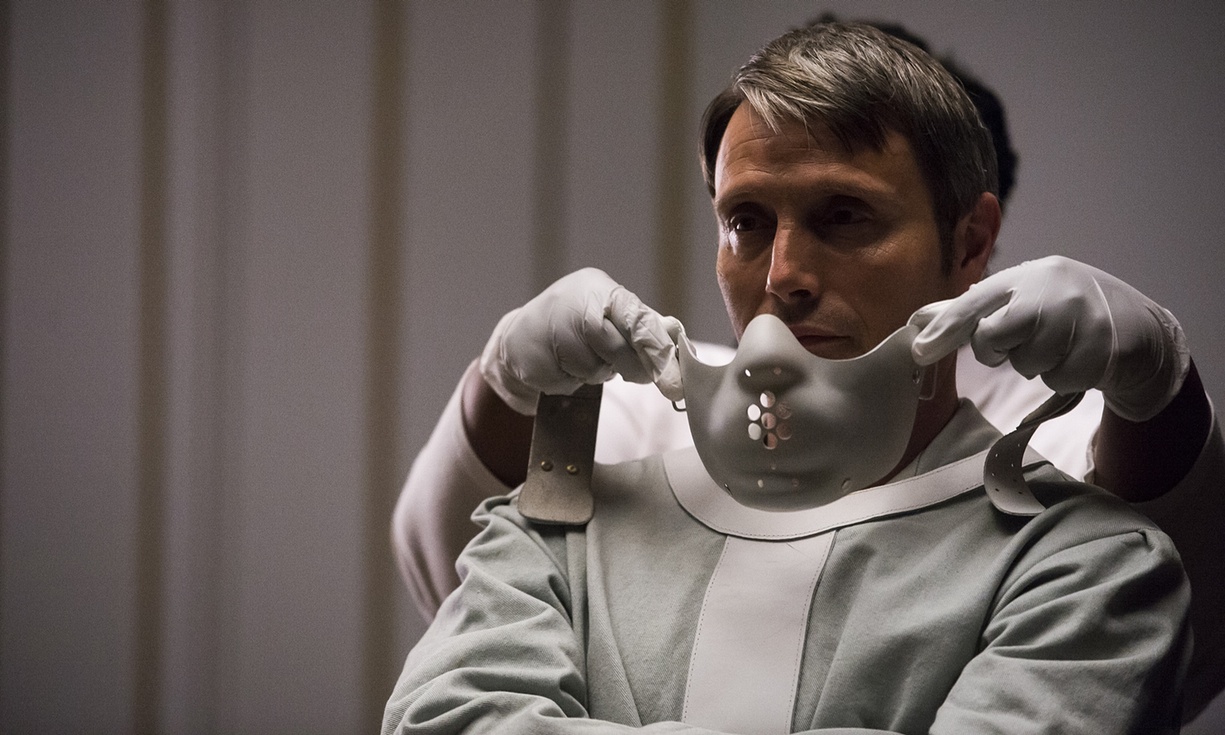
Fall TV season is almost upon us and for the first time in more than half a decade I am looking forward to the season premiere of The Good Wife after my wife and I completely devoured six seasons on Amazon Prime. Both the lovely KDM and myself had long dismissed the show despite the loud protestations from advocates for Julianna Margulies and partners. While there is plenty of old and new television looming on the horizon there has been some great summer fare to give my DVR something to do before we get into the Fall months of recording conflicts.
Hannibal: Red Dragon
Anyone who follows me on Twitter knows that I have been a staunch advocate for this show since it started airing three seasons ago. At the time I was terrified it would be cancelled before the only hate-watchable The Following that starting airing during the same year. I won’t even get that much out of the show as the last handful of episodes are playing out on NBC over the next couple of weeks. In the end Joe Carroll got more episodes than Hannibal Lecter (although both shows are in streaming limbo for a potential fourth season) and while it is not on the same level of depravity as making Osso Bucco from the shanks of your enemies it is still a crime.
The last six episodes of this season are taken from Red Dragon, the first Thomas Harris book to introduce us to Hannibal “The Cannibal” Lecter. It is an odd departure from the first two and a half seasons of the show which all served as preamble to Lecter’s capture and Will Graham’s pursuit of The Great Red Dragon aka Francis Dolarhyde. The story has been told twice before in movies; once with Bryan Cox playing Lecter in Manhunter and the second time with Academy Award winner Anthony Hopkins reprising his role from Silence of the Lambs.
So far this has been my favorite of the three adaptations and — and this is going to be heretical to many — Mads Mikkelsen has ascended to the top spot of the three men to portray Lecter. In all his previous incarnations we only get to meet Lecter in prison first and are told his backstory. Seeing the backstory play out and building up the relationship between Will Graham and Dr. Lecter makes their consulting scenes in the asylum much more chilling.
What has been shocking about this final act of the show is how faithful it has been to the source material. The episodes leading up to this last half season have played fast and loose with the timeline for Lecter. They have taken elements of Silence of the Lambs, Hannibal, and Hannibal Rising and strewn them about the build up to Lecter’s apprehension and incarceration. Once we arrive in the attic of Dolarhyde’s childhood home and the Red Dragon arc begins there is very little deviation. The trajectory of several characters in the earlier episodes leads to divergence in these remaining few; a rather arch Dr. Alana Bloom running the asylum being the most notable displacement of the book’s characters.
There is a nod to some of the differences when Hannibal won’t reveal how he and Dolarhyde are communicating and he jokes about personal ads and messages written on toilet paper, which was the method used in the book and in the first movie.
You can watch these six episodes without having seen the previous ones — although I strongly urge you to go back and watch it from the beginning if you haven’t seen it already. Bryan Fuller’s vision for the series is much more clear — albeit dark and twisted — than anything else that has been done with it in the past. Be warned that those episodes are particularly gruesome, I still cannot believe they were aired on network television, but always shot with a sense of purpose. The motif of serial killers as artists is hit upon time and time again and we see human bodies turned inside out and bent in unnatural ways to become totem poles, recreate scenes from works of art and literatures, and to become a human color wheel. If you are not squeamish it is well worth watching. Red Dragon has much less gore with the good doctor behind plexiglass although there are still a couple of episodes left and one Freddie Lounds still to be accounted for.
Mr. Robot
This has quickly shot up the charts into my top five shows right alongside the aforementioned Hannibal. There are just a couple of episodes left this season but USA Network has them all available online and they are well worth the investment of your time. The show is an unreliable accounting of events as told by the show’s antihero Elliot Alderson a security consultant by day and a hacktivist by night. He is also a morphine addict and suffers from an antisocial personality disorder.
Elliott is drawn into the web of an hacker terrorist organization called fsociety by Mr. Robot, played by Christian Slater who may or may not be a product of Elliott’s drug addled imagination. After watching the first episode of the show I called it a mix of Heathers, Fight Club, and The Conversation. The first two have been used extensively to describe the show but the paranoia of The Conversation (or Enemy of the State for you young ‘uns) is thoroughly steeped into every second of this show.
Twitter exploded after the most recent episode and I don’t want to reveal too much but if you do not watch this soon you will find yourself on the wrong side of the Ned Stark is dead (oops!) discussions as this show becomes one of the most buzzed about between now and the start of Season 2. As unlikely as Hannibal seems on NBC this seems even more unlikely on USA Network the home of the frothy Suits and Royal Pains. This seems more likely to have languished anonymously on Sundance for a couple of seasons.
There are plenty of great character performances throughout the season but Martin Wallström and Stephanie Corneliussen are threatening to steal the show as the Machiavellian power couple striving to get Wallström the CFO title at Evil Corp. Oh yeah, since we are relying on Elliott as our narrator whenever anyone refers to the conglomerate at the heart of the show’s conspiracies it is simply called Evil Corp. Just trust me and watch the first couple of episodes and get all caught up before Ned Stark’s head hits the basket.
Show Me a Hero
I watch a lot of television and yet somehow I missed out on David Simon’s Treme when it first aired on HBO. I consider The Wire to be at the very pinnacle of TVs accomplishments but I was not ready to wade into Treme until recently. I am halfway through and it has cemented David Simon as someone who will always get my attention when he has something that makes it to the small screen.
I was pretty excited to watch the first episodes of Show Me a Hero, a six part miniseries that he created from the book by Lisa Belkin (which I have not read but will remedy shortly) starring Oscar Isaac. The show is classic Simon as it follows a handful of ordinary people played by extraordinary actors through their lives in the late 80’s Yonkers. When we pick up the story the town had already been embroiled in a years old court case about integrating affordable housing into the white, blue collar community that is terrified and angry about their property values.
Oscar Isaac, who reminds me of a young pre-Hooowaaah! Al Pacino, plays Nick Wasicsko who ascends to become the mayor of Yonkers by taking a populist position against the federal push for integration. Once he gets there he must cope with the reality of the federal court’s mandate which includes the potential of bankrupting fines. When he switches his position to save the city from the financial hardship of being in contempt of court he loses the love of the people and reinvents the White Russian as a cocktail made from Stoli and Maalox.
The two episodes also followed the lives of multiple Yonkers residents on different sides of the struggle. It is reminiscent of the middle seasons of The Wire that focused on the travails of teachers, stevedores, and newspaper columnists as much as it did the cops and drug dealers who shared their city. Which is basically the highest recommendation I can give a show.






